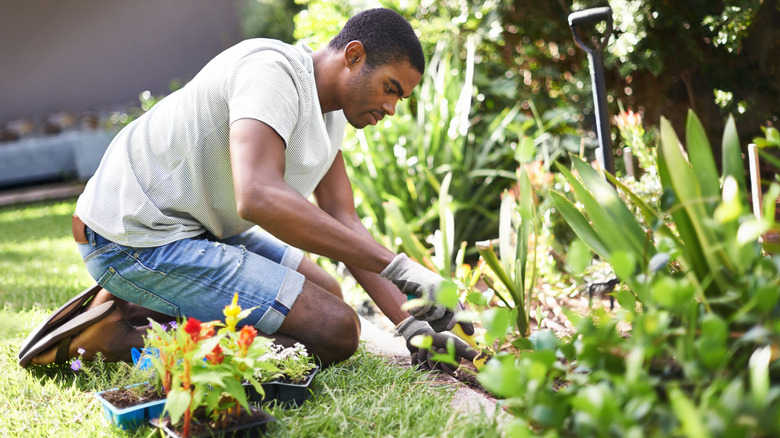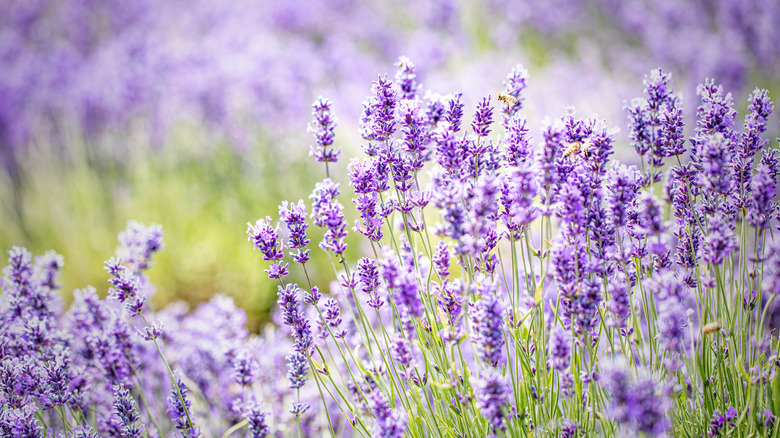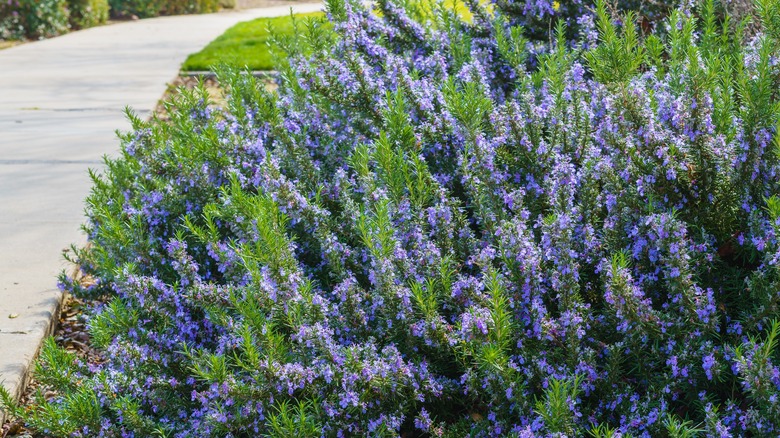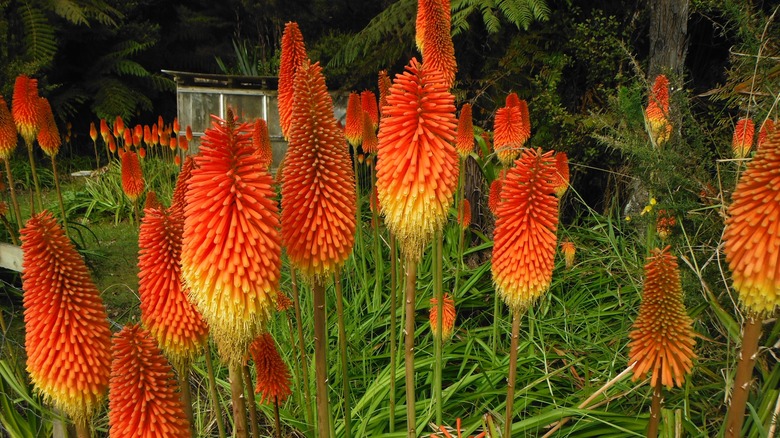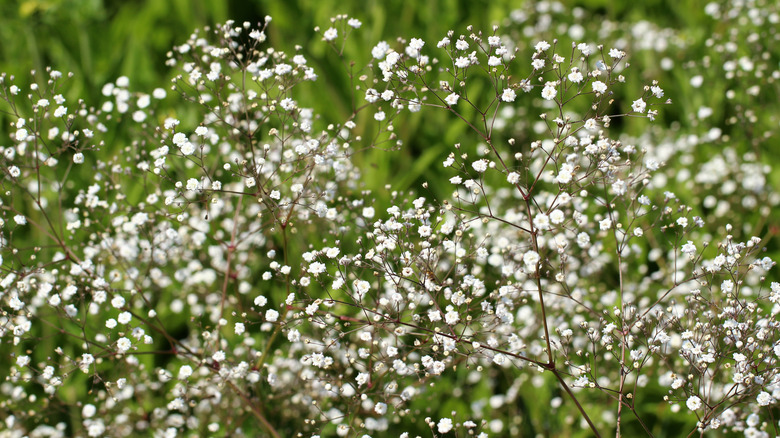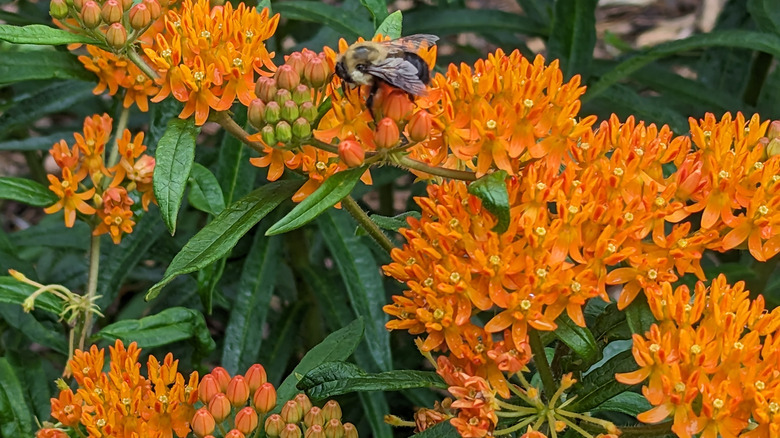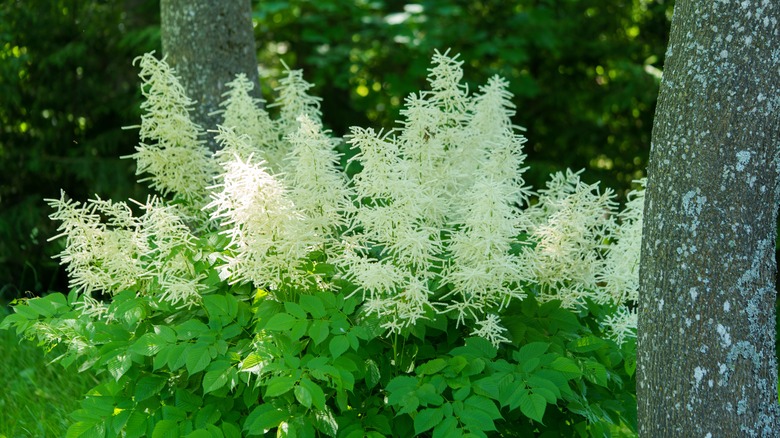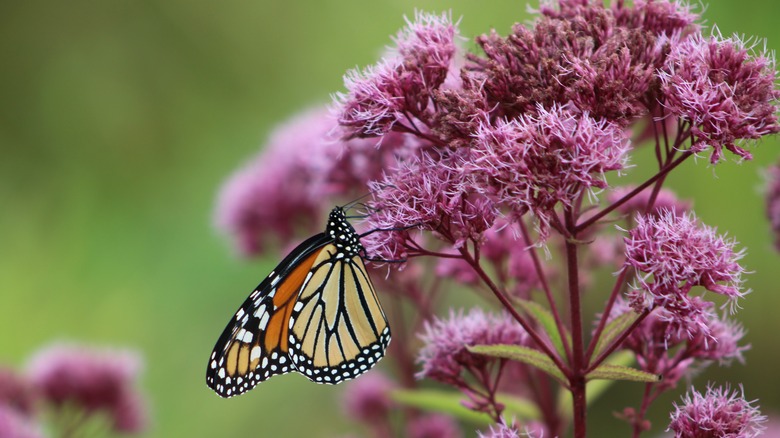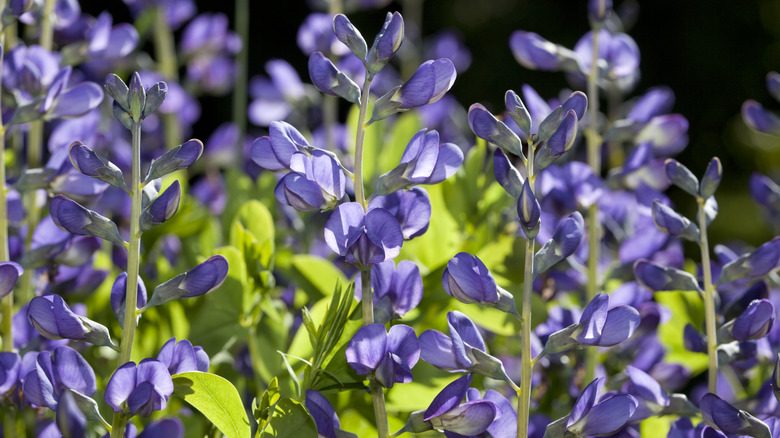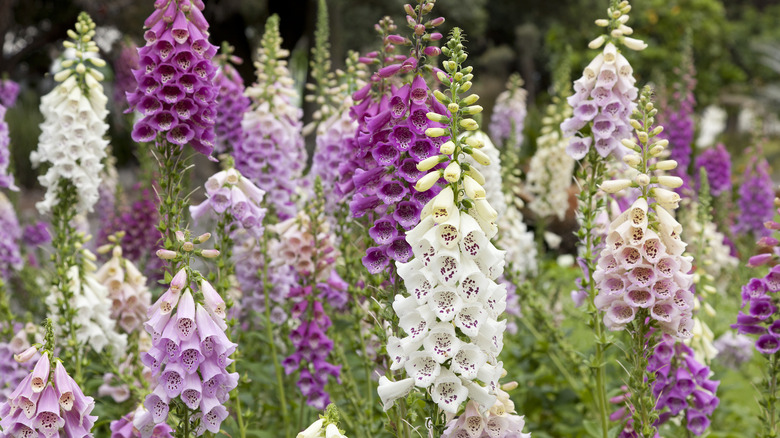Avoid Dividing These 9 Perennials At All Costs
Advice about when and how to divide perennials is easy to find. You can even get you started with this list of 20 perennials you should be dividing in the fall. A bit harder to find is advice on which perennials are best left alone, and there are quite a few that fall into this category. Some perennials simply shouldn't be divided. Fortunately, we can help you know which ones you should avoid disturbing.
Gardeners divide perennials because it gives the plant's roots more space to grow and can help the plant perform better overall. It can also prevent plants from becoming too large. Of course, division also provides you with new plants to place in other areas of the garden for free. But some plants resent being dug up and divided. Woody shrubs that grow from a central stem and plants with deep taproots are prime examples of this. If you're looking around the garden and wondering which plants to divide and which are best left alone, this list can help you.
Lavender
Like most woody shrubs, lavender doesn't divide well and the divisions tend to die. This is because the shrubs grow by branching off one central stem. This makes successfully dividing them extremely difficult. But if the reason you want to divide your lavender is to get more plants, you're in luck. It's common for some of the plant's lower branches to touch the ground and start to form roots. This is known as layering. If you're careful, you can dig up the roots of these layered stems and cut the stem away from the parent plant, creating a new lavender plant you can transplant.
Lavender is easy to grow, but there are a few things you should know before planting it. In USDA plant hardiness zones 5 through 9, place your new plant in full sun and well-drained soil. Once established, your new lavender plant will be drought-resistant and require little to no water from you, so avoid overwatering. Lavender doesn't require fertilizing, either, and is a very hardy perennial that will thrive even with some neglect. If desired, however, you can deadhead spent blossoms to enjoy a second bloom. Lavender blooms on new wood, so cut the plant back by a third each spring starting in its second year to maximize flowering.
Rosemary
Like lavender, rosemary is a woody shrub that doesn't divide well, and you could kill your main plant if the division process goes wrong. Growing new plants from seeds takes forever, but you can propagate rosemary from cuttings. Simply remove a few healthy stems from the plant, dip them in rooting compound if you wish, and then plant them in small pots. You can plant your cuttings directly in the garden instead, but keep the soil moist and the air around them humid while they are taking hold.
Although rosemary is drought tolerant once it gets going, you should water it regularly during its first summer growing season. This evergreen is hardy down to USDA zone 7, but can still use a little help battling the winter cold. Applying a thick layer of mulch to the plant in the fall will help ensure that it gets through the winter months unscathed. To prevent the plant from getting leggy, prune it sparingly after it flowers.
Red Hot Pokers
Although there are gifted gardeners who can pull it off, it's best to avoid dividing red hot pokers. These plants just don't like being disturbed once they've taken hold. You can, however, still get new plants from your old ones. If you look around the plant, you will see smaller plants sitting nearby. These are called pups, and you can dig out these pups, separate them from the mother plant with a sharp spade, and transplant them if you catch them while they are still small.
This red hot flower will stand out in your yard while drawing in hummingbirds. Plant your red hot poker pups in full sun and well-drained soil. They won't tolerate wet feet, so soil that drains slowly is best avoided. Although too much water is a problem, you should make sure the plants get about 1 inch of water a week during very hot summers. Red hot pokers also like a few inches of organic mulch each spring, at which time you should cut them back to a height of 3 inches. Deadheading is not required, but will encourage the plant to replace spent blossoms more quickly. Red hot pokers grow in USDA zones 5 through 9.
Baby's Breath
Often used as filler in bouquets, baby's breath is beautiful to look at, but a nightmare to try and divide due to a single taproot. Plants with a single taproot can be difficult to dig up and unearth for division when the taproot is long. If the plant hasn't developed a few smaller taproots that you can take with your division, dividing it is destined to fail. You must also be very careful that you don't damage the parent plant's taproot while handling the plant, as doing so can kill it. Adding to the problem is the fact that baby's breath is quite delicate. It's best to simply skip the whole affair.
Fortunately, baby's breath is easy to grow from both seeds and cuttings throughout USDA hardiness zones 3 through 9. It enjoys direct sunlight in the cooler zones, but may need some light shade in hotter regions. Baby's breath will grow in any well-drained soil and isn't picky about soil nutrients. It will grow in poor soil and does better when you skip the fertilizer, as too much plant food makes this species forgo flowering to focus on growing stems and leaves. Be aware that baby's breath can be invasive, so think twice before adding it to your garden.
Butterfly weed
Butterfly weed's drought tolerance comes from a very long taproot which, as is true of baby's breath, makes the plant very difficult to disturb and divide successfully. If you want more butterfly weed, the best way to get it is by using the cold stratification method to plant more seeds. To do so, harvest the seeds and store them in a cold location for a few weeks. Then, you can sow them in the garden. You can also opt to do nothing as butterfly weed is a prolific self-seeder. Planting more seeds is a great way to make sure your butterfly weed doesn't all gather in one place.
Found in gardens in USDA hardiness zones 3 through 9, butterfly weed produces bright orange flowers that attract butterflies, pollinators, and birds. The plant likes full sun and well-drained, sandy soils. Beyond that, your butterfly weed will ask for very little. Fertilization isn't necessary and usually serves only to make the plant leggy. If you want to try and limit the plant's self-seeding tendencies, you can cut it back to just a few inches in height each fall, but this isn't necessary.
Goat's Beard
You can divide most perennials with a sharp spade, but that's not the case with goat's beard. This plant forms incredibly thick roots that you'll need a saw to cut through, making division difficult and labor-intensive. Instead, it's best to try to find and remove a few young pup plants around the mother, similar to the approach taken with red hot pokers. Goat's beard will also slowly spread itself via rhizomes, but doesn't do so quickly.
Goat's beard grows well in part shade and is an excellent choice if you've got critters that like to stop by the garden since it's deer- and rabbit-resistant. You'll need to keep the soil around your goat's beard consistently moist, so make sure you mulch it well to help with water retention. If your plant isn't getting enough water, it will let you know by allowing the edges of its leaves to dry out. Goat's beard grows in USDA hardiness zones 3 through 8 and likes nutrient-rich soil. It will benefit from an application of slow-release granular fertilizer in the spring.
Joe Pye weed
Coming in at heights of 10 feet or more, Joe Pye weed has a massive root system that is difficult to dig up. If you manage to do it, the roots are heavy and the plant is unwieldy due to its height. Unless you're feeling super ambitious, this one is best left in the ground. You can grow new plants from seed by either starting them indoors or sowing them directly in the garden after cold stratification. If this concept is new to you, you can learn more about seed stratification here.
With beautiful light purple flowers that emit the faint scent of vanilla, Joe Pye weed is popular in gardens throughout USDA hardiness zones 4 through 9. Joe Pye weed will thrive in full sun or part shade and likes moist soil. It will tolerate slow-draining soils better than many other plants, but it won't do well in very dry soil. These pants do appreciate being pruned back either after they die back in the winter or early in the spring. Fertilize your plants with a slow-release fertilizer in the spring when new growth starts and again when they start to bloom in the summer.
False indigo
False indigo takes some time to get established, and once it does, you probably don't want to disturb it. This is another plant with a deep tap root that takes quite a bit of effort to dig up. And even if you're careful, it's easy to damage the taproot during division. It's best to propagate false indigo by collecting the seed pods that form on the plant in the fall and dropping the seeds directly in the garden.
Found in USDA hardiness zones 3 through 10, false indigo enjoys a wide growing region. The plant is drought-resistant once established, but enjoys a deep watering once a week during its first season. Increase your watering schedule if the weather is extremely hot, watering two or three times a week as long as hot weather persists. Plant false indigo where there is full sun and well-draining soil. You need not worry about fertilizing this plant, as it is native to the American prairie where nutrient-rich soil is in short supply.
Biennial foxglove
Regular foxglove is easy to divide, but perennial varieties don't like it — and digging them up anyway can cause them to skip their already short blooming period altogether. Foxglove is easy to grow from seed, however, and you can harvest the seeds and sow them in the garden, or allow the plant to self-seed. You can deadhead foxglove if you want a second round of flowers, but remember to leave at least a few spent blooms on the plant if you want seeds. If you collect seeds but can't use them right now, there are several clever ways to store them.
Foxgloves enjoy full sun, but some cultivars do just fine in part shade. The plants tend to wilt a bit in temperatures above 90 degrees Fahrenheit, however, so plant them in part shade if you live in an area where summers get very hot. They like soil that stays evenly moist, but not swampy or wet. It's good to keep an eye on them when the weather is dry, as they don't tolerate drought well and will likely need to be watered. While not strictly necessary, applying a 5-10-5 fertilizer in the spring can lead to more flowers and larger blooms.

